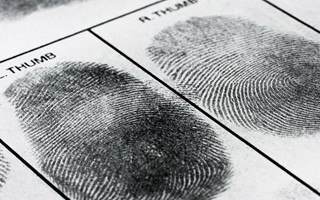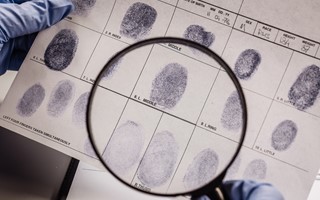News April 07, 2020 7m
This article featured in The Barrister Magazine in March 2020. Written by Forensic Access founder Angela Gallop, ‘Unnatural Selection - Forensic Science on the Endangered List’ identifies a cost/quality historical cycle and presents how we can break out of it to deliver justice.
Based on a presentation given to the All Party Parliamentary Group on Miscarriages of Justice (4th February 2020)
With a career in forensic science that stretches back to 1974, it’s inevitable that I sometimes look back to see if there’s anything in the past which might conceivably help to solve the problems of today. I first started doing this in 2009 as we emerged from a particularly difficult period when the industry had been in stasis for four long years while the police designed a new process for procuring their forensic services.
Trends in Cost v Quality in Forensic Science
I drew a diagram which sought to capture key milestones in the history of forensic science. I soon discovered that this effectively described alternating cycles of concern about the quality of forensic services on the one hand, and the cost of them on the other, and the way in which customers and suppliers reacted to these. The diagram started in the 1930s with the beginnings of modern forensic science and the establishment of what became the Home Office Forensic Science Service to serve provincial forces, while the Metropolitan Police set up its own laboratory. It ended with some predications for the next five years. In 2014 I re-visited the diagram and found that my predictions had been remarkably accurate, so I added another set for a further five years. Again, my predictions have largely come true.
So where are we now?
According to my analysis, we are currently nearing the end of a phase where much of the emphasis has been on reducing cost – reflecting several years of police budget cuts in the name of Austerity. Although forensic science is a small part of police expenditure, it is a relatively large part of its external spend so it sticks out like a sore thumb and makes an attractive target for cuts. Less work is being commissioned and more of what there is, is being taken in-house by expanded police laboratories. Lower turnover and tighter margins for external suppliers have left them struggling. Of the three largest in this fiercely competitive market, one went into administration and ironically had to be supported by the police until rescue investment could be found, another posted large losses before being bought out by its management team, and the third was sold to an overseas company. In its report published last year, a House of Lords Inquiry into Forensic Science estimated that 80% of all forensic work is now conducted by police and concerns about quality are once again in the ascendant. Some mistakes will inevitably be made by suppliers battling to provide quality science in very tight timescales on very narrow margins. Others will be made by police laboratories, not all of which are internationally accredited as external suppliers have to be. But some mistakes are far more subtle and arise as a direct consequence of in-sourcing, and commissioning less work per case and increasingly focused work, and it’s these that we need to take a closer look at as they can be just as devastating to justice.
More in-sourcing
Police forces have always been responsible for some aspects of forensic science – particularly fingerprints - because these started to be used in criminal investigations long before crime laboratories existed, and scenes of crime examination - as this marked the boundary between police investigation and forensic science. But increasingly, forces have been taking on other types of work including, for example, initial searches of items for potential evidence and primary bench-based testing associated with this, leaving only the more complex, secondary techniques to external labs. There is a general misconception that searching is a pretty straightforward activity and one size more-or-less fits all. But this is far from the truth. This is the time when tiny traces of evidence can be found, or missed, lost or contaminated. In more minor cases maybe it doesn’t matter if only the obvious traces are found, but at the other end of the scale it could prove critical to whether or not the case is solved. And where effort is fragmented between two or more organisations, who decides what the results of the tests mean in the context of the case? Is it the searcher who saw the blood staining on the item in its original form and took the sample for DNA profiling, or is it the DNA profiler themselves? Neither has the complete picture.
But a more fundamental question to ask is, is it right for the organisation – however well regarded, which is charged with tracking down and helping to prosecute potential offenders also to be providing the independent, impartial scientific evidence that will be used against them at their trial? What about everything we’ve learned about cognitive bias – that unwitting tendency to skew the evidence to fit any pre-conceived notions we may have about the guilt or innocence of a suspect, and that in recent years Dr Itiel Droor and his colleagues have done so much to enlighten us about. Less work per case
Obviously the less work commissioned in a case, the less it costs. But when selections are confined to one or two tests on one or two items, results can represent self-fulfilling prophesies – as you can only find what you look for. Compounding risks here are the use of Streamlined Forensic Reports (SFRs) which provide some of the facts but none of the context in which they need to be interpreted. This risks providing an incomplete picture and/or drawing the wrong conclusions. It also makes it much harder for those representing defendants to work out where potential grounds for challenge might lie. They are already up against it because legal aid funding for the work is severely restricted, and there is no requirement for defence experts to be accredited and therefore necessarily to know what they are doing. So the critical safety net of defence checks is becoming ever smaller and more full of holes.
Increasingly focused work
In an effort to obtain the ‘best bang for their buck’, police forces are increasingly focusing their forensics on three main types of evidence that are capable of providing direct and potentially powerful links with individuals. These are fingerprints, DNA and evidence from digital devices such as mobile phones and CCTV cameras. This is leading to ‘de-skilling’ in many traditional forensic disciplines – such as textile fibres, glass and paint, and the ability to knit these together in holistic investigation strategies which have been so successful in solving more complex cases such as the Stephen Lawrence, and Coastal Path murders. Of course, over time there will be shifts in popularity of different evidence types reflecting technological advances, but we should be careful not to lose specific expertise altogether because you never know when you might need it. A knock-on effect is that critical initial samples are often no longer taken, reducing the likelihood of successful re-investigations in the future.
Compounding our current challenges is the exponential rise in digital forensics reflecting the increasing use of the wide range of digital devices through which we now live our lives. To get on top of this will require a very different model from anything we’ve had in the past – more automated, and exploiting the increasing power of artificial intelligence. But this doesn’t get away from the need to ensure that all information elicited from these devices is properly contextualised, and for the defence to be able to scrutinise the evidence and independently assess what it is likely to mean for an individual defendant.
Breaking the cycle
So, how can we break out of the cost/quality cycle we’ve been stuck in for decades, and avoid actively encouraging miscarriages of justice that this inspires? A good start would surely be by:
- Involving all stakeholders in the delivery of justice (not just the police and prosecution) in setting a proper national strategy for forensic science
- Taking into account the excellent recommendations in the 2019 report of the House of Lords Inquiry into Forensic Science
- Holding broader discussions about in-sourcing of forensic science by the police while there is still an alternative
- Giving the Forensic Regulator long overdue statutory powers so that she can insist all forensic providers are accredited
- Acknowledging that forensic science is much more than just ‘testing’, and using it properly or not at all - to maximise its benefits and minimise the risk of miscarriage of justice
- Recognising that it needs funding properly – both to provide day-to-day services and engage in research and development so it can stay ahead of the game
- Ensuring that, wherever forensic evidence is critical in a case, it is automatically scrutinised on behalf of the defence by a properly qualified and experienced independent forensic scientist to minimise the risk of miscarriage of justice
- Maintain a broad skills base and holistic approaches to exploit this so we can continue to help solve even the most complex of cases
- Ensure lessons are learned from cold case successes and future proof current cases by taking appropriate samples at the outset
As the American essayist and poet, George Santayana, memorably observed:
‘Those who do not remember the past are condemned to repeat it’
That certainly looks like what’s been happening with forensic science. But with the added consequence that increasingly the innocent may be convicted of crimes they didn’t commit, and the guilty may be allowed to go free to offend again. And the British public will be right to feel betrayed by those who should know better.
Professor Angela Gallop CBE
Forensic Access Ltd
*Based on a presentation given to the All Party Parliamentary Group on Miscarriages of Justice (4th February 2020)
Angela Gallop is known equally for setting up and running full scale forensic laboratories and for personally leading the scientific teams who helped to solve many of the UK’s most complex and high profile criminal cases including Rachel Nickell, Damilola Taylor and Stephen Lawrence.
To find out more about the forensic services we offer, fill-in our online contact form or Tel: 01235 774870 to speak with our team.


